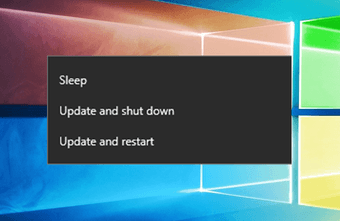spell check tool. The best example here would be MS Word. Similarly, many online services and independent tools have tried to feature this behavior. However, there may be occasions when you need to check the spelling of words in an application that does not have a built-in spelling checker. The most common example of such a tool would be Notepad. Now, you can always open a word processor which supports the checking of spellings. But that isn’t the wisest thing to do, right? There is a better solution in the form of an application which checks for typed words on all Windows applications. tinySpell is what we are talking about, and it detects a misspelled word on the fly with suggestions for correct replacements. Let us explore what’s in store.
Getting Started With tinySpell
First and foremost, download the tool and install it on your machine. You can also choose to grab the portable version. Besides, they have a paid version with additional features. Once the installation process is complete, the app icon will go and sit on the system tray on the bottom right corner. Right-clicking on that icon will pull up its context menu, exactly where you may want to start with. We suggest that you tweak the settings a bit before you begin. Among the setting options you should at least set the Spelling tip to Large and Bold. We say this because we tried the default and that wasn’t very appealing to the eyes. Another thing you should do is Disable beep. Otherwise a beep is produced for every misspelled work and that is kind of irritating. Besides, if you want you can add few specific and unique words (which you know would show as errors) to the Dictionary. The Applications option is meant to define the group of tools/apps that you would like tinySpell to monitor or not to monitor. The result would depend on your definition of apps within the Enable/Disable sections and selection of the same.
How Does tinySpell Work
After working with the settings we moved over to Notepad (that’s the best example we could think of) and started typing. Here’s an example of an error we encountered. You must note that you have to correct a spelling suggestion when you come across it. If you ignore one and continue with the task you won’t be suggested for the change any more. This is a slight limitation of the tool. In order to check the real strength, we also tried creating a new folder. Amazingly, the tool monitors spell checks and suggests corrections there as well. There is an independent spell checking part attached to this tool. Meaning, if you want to check for a word in general, you can navigate to its context menu and Open spelling window.
Conclusion
tinySpell is no doubt a must have add-on for all Windows PC users. But you also have to take care of the details in defining the apps that the tool is supposed to monitor. Give it a try and you will find it useful at some time or the other. Top Image Credit: Nic McPhee The above article may contain affiliate links which help support Guiding Tech. However, it does not affect our editorial integrity. The content remains unbiased and authentic.
![]()













